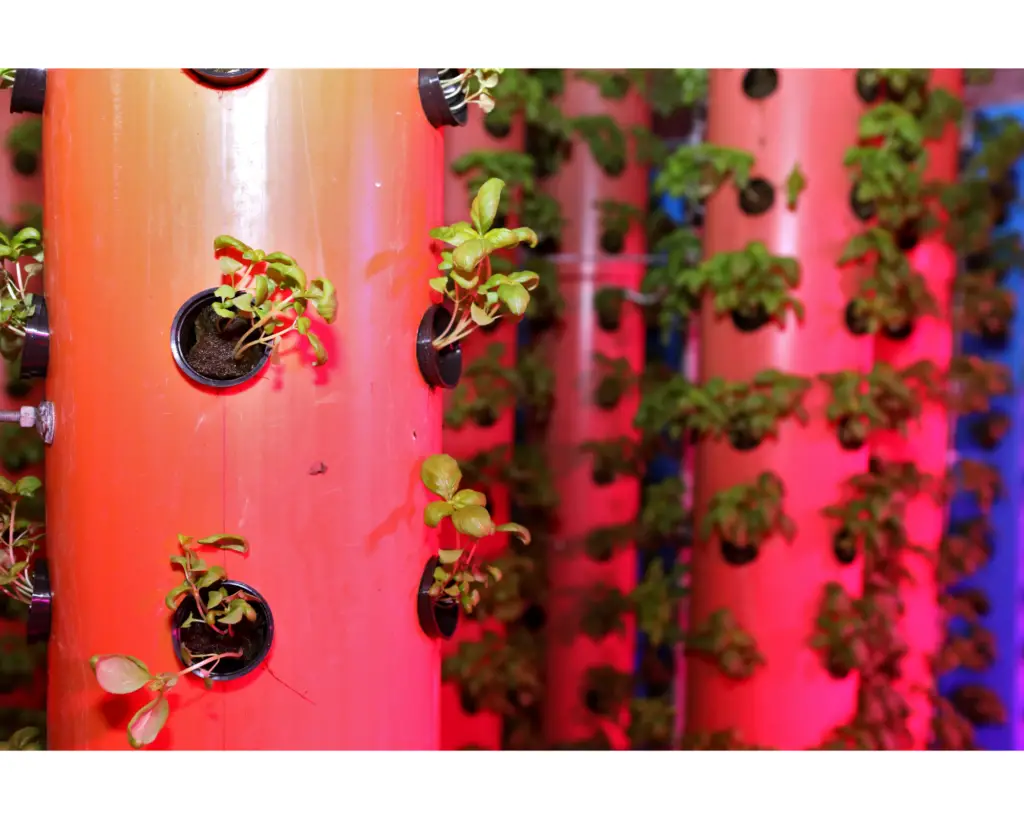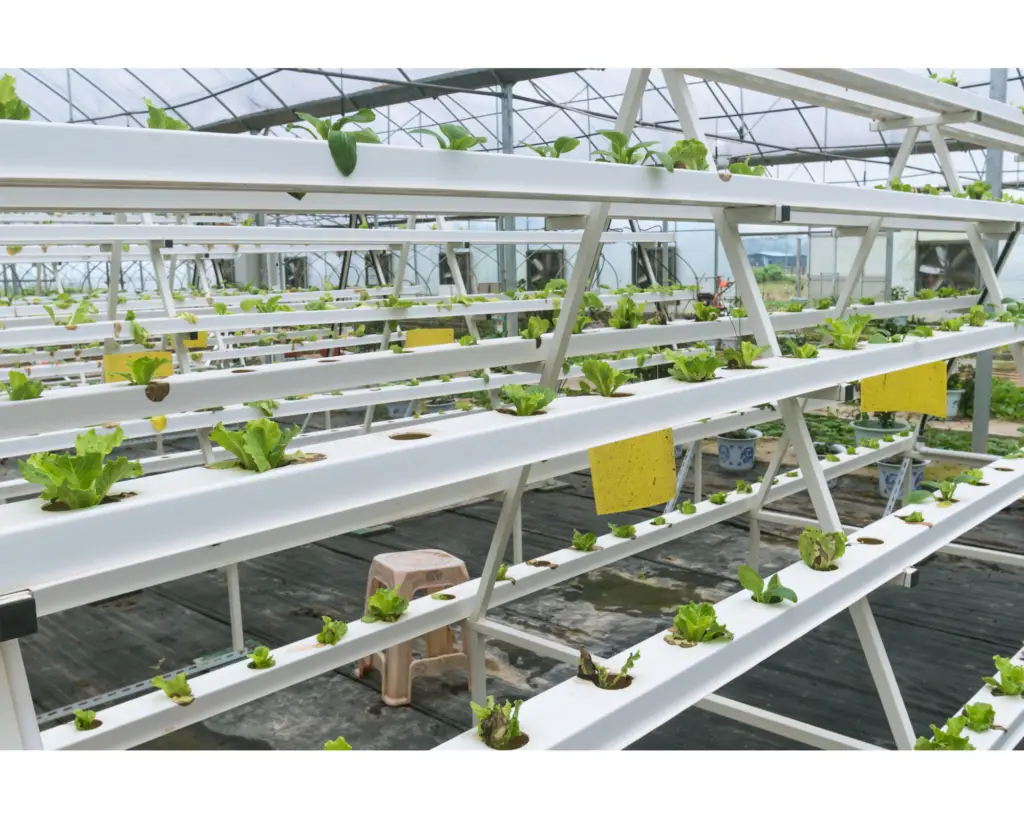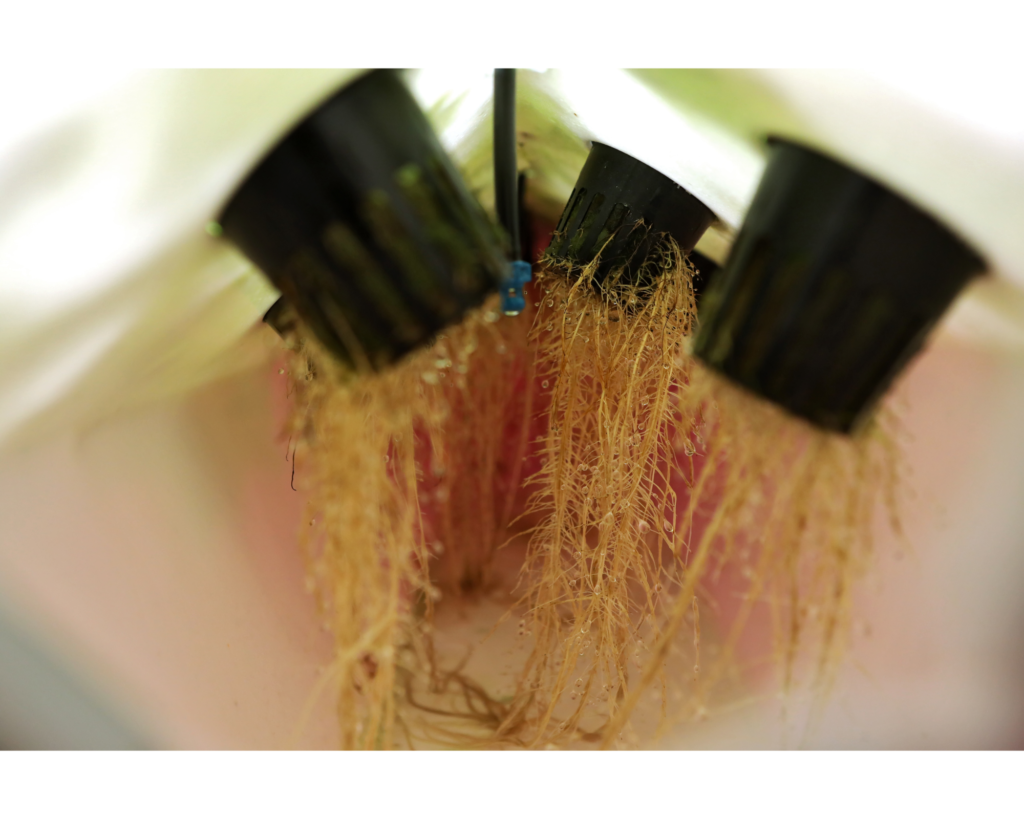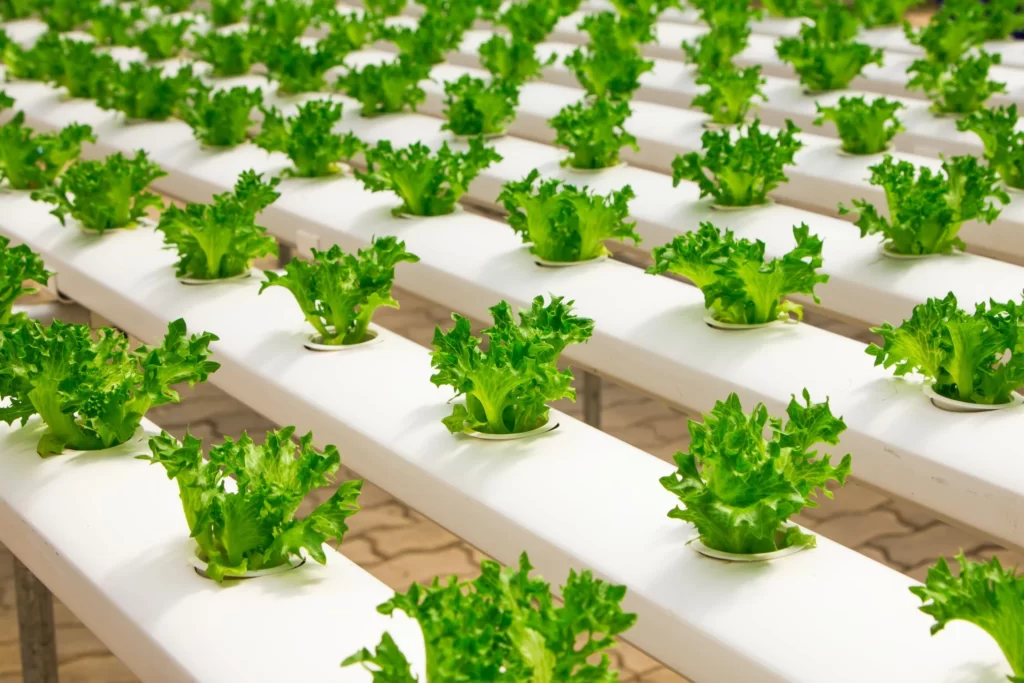Table of Contents
What are aeroponic towers?
Aeroponic towers are hydroponic growing systems that use a mist of water and nutrients to provide plants with the necessary elements for growth. In an aeroponic tower, plants are grown in net cups that are suspended in a central column, and their roots are misted with a fine spray of nutrient-rich water.
Aeroponic systems differ from other hydroponic systems in that they do not rely on soil or a growing medium to support the plants. Instead, the mist provides both moisture and support to the roots. The mist also helps to oxygenate the root system, which is essential for healthy plant growth.
Aeroponic towers are typically tall and narrow, making them a good choice for growing plants in limited space. They are also very efficient, using less water and nutrients than other hydroponic systems. Additionally, the misting action helps to prevent disease and pests, creating a healthier growing environment for the plants.
Overall, aeroponic towers can be a great option for growing plants indoors or in urban environments, where space is limited and environmental conditions are not ideal for traditional agriculture.


A DIY guide for building an aeroponic tower
Here’s a basic DIY guide for building an aeroponic tower:
Materials:
- PVC pipe (10-inch diameter, 8 feet long)
- PVC end cap
- PVC elbow joints (45-degree angle)
- PVC T-joints
- PVC pipe cutter or saw
- Drill with a 3/16-inch drill bit
- Heavy-duty waterproof tape
- Water pump
- Air pump
- Air stones
- Air tubing
- Timer
- Growing medium (e.g. clay pellets, coconut coir)
- Net cups
- Seeds or seedlings
- Growing light
Steps:
- Cut the PVC pipe into three equal sections (2 feet long each).
- Attach a T-joint to one end of each section and an elbow joint to the other end.
- Connect the three sections with T-joints to form a tower shape.
- Drill 3/16-inch holes into the PVC pipe, spaced evenly along the sides of the tower.
- Insert net cups into the holes, making sure they are secure.
- Fill the bottom of the tower with the growing medium.
- Add water to the tower and connect the water pump.
- Connect the air pump and air stones, and attach the air tubing to the T-joints.
- Set the timer to turn the pumps on and off at specific intervals.
- Place seedlings or seeds in the net cups and add water to the tower.
- Turn on the lights and adjust the pumps as needed.
Note: This is just a basic guide and you can customize the design and materials to fit your specific needs and preferences. Be sure to research the specific requirements for the plants you plan to grow and adjust the setup accordingly.
How to maintain aeroponic towers
Maintaining an aeroponic tower requires regular monitoring and upkeep to ensure that the plants receive the right amount of water, nutrients, and light. Here are some tips for maintaining your aeroponic tower:
- Monitor the water levels: Make sure that the water levels in the reservoir are at the correct levels and refill them as needed. Also, keep an eye out for any leaks in the tubing or connections and fix them promptly to prevent water loss.
- Adjust the nutrient solution: Regularly check the pH and EC (electrical conductivity) levels of the nutrient solution and adjust as needed to provide the plants with optimal growing conditions.
- Clean the system: Regularly clean the system to prevent the build-up of mineral deposits and other debris that can clog the nozzles and reduce the efficiency of the system.
- Prune the plants: Regularly prune the plants to remove dead or yellowing leaves, promote healthy growth, and maintain a good balance between the roots and leaves.
- Monitor the temperature: Make sure that the temperature of the water and air in the tower remains within the optimal range for plant growth. If necessary, use fans or cooling systems to regulate the temperature.
- Check the lighting: Make sure that the grow lights are functioning properly and provide the plants with the right amount of light. Replace bulbs as needed and adjust the height of the lights as the plants grow.
- Replace parts: Regularly check the pumps, nozzles, and other components of the system for wear and tear and replace them as needed to maintain optimal performance.
By following these tips and regularly monitoring the system, you can maintain a healthy and productive aeroponic tower. Make sure to consult with experienced growers or resources to troubleshoot any issues that arise.


What can I plant in an aeroponic tower?
Aeroponic towers can be used to grow a variety of plants, including herbs, leafy greens, and small fruits. Some popular choices include lettuce, spinach, basil, parsley, mint, strawberries, and cherry tomatoes.
When choosing plants for your aeroponic tower, consider the following factors:
- Plant size: Choose plants that will fit within the limited space of the tower.
- Growth habit: Consider whether the plants are climbing or trailing and whether they will need support in the tower.
- Light requirements: Choose plants that will thrive under the light conditions provided by your growing lights.
- Nutrient requirements: Make sure that the plants you choose have compatible nutrient requirements and that the nutrient solution you are using can meet those needs.
- Harvest time: Consider the time to maturity and the expected yield of the plants to determine whether they are a good fit for your tower.
In general, aeroponic towers are well suited to fast-growing, nutrient-efficient plants that do not require a lot of space. As with any hydroponic system, it’s important to carefully research and follow the recommended growing conditions for the plants you choose to ensure success.



What soil do I use for aeroponic towers?
In aeroponic towers, the soil is not used as the growing medium. Instead, a variety of alternative materials are used, such as clay pebbles, rockwool, coconut coir, perlite, or vermiculite. These materials provide support for the roots and allow for the exchange of oxygen and water, but do not contain any nutrients.
The choice of growing medium will depend on factors such as the type of plants you are growing, the design of your tower, and your personal preference. Some of the most commonly used growing media in aeroponic towers include:
- Clay pebbles: These are small, lightweight, and porous balls made of clay that provides excellent aeration and water retention.
- Rockwool: This is a synthetic material made from melted rocks that are spun into fibers. It is commonly used in hydroponic systems due to its excellent water-holding capacity and insulation properties.
- Coconut coir: This is a fibrous material made from coconut husks that is known for its water-holding capacity and aeration properties.
- Perlite: This is a volcanic glass material that is light and porous, making it a good choice for aeroponic systems.
- Vermiculite: This is a naturally occurring mineral that is similar to perlite in its water-holding and aeration properties.
Whichever growing medium you choose, make sure to rinse it thoroughly before use to remove any dust or debris. It’s also important to follow the manufacturer’s instructions for use and storage to ensure optimal performance.



What fertilisers can I add to aeroponic towers?
Aeroponic systems rely on a nutrient solution to provide the plants with the necessary nutrients for growth. There are a variety of fertilizers that can be used in aeroponic towers, including:
- Hydroponic fertilisers: These are specifically designed for use in hydroponic systems and provide a balanced mix of essential macro and micronutrients. They come in both liquid and powdered form.
- Organic fertilisers: These are made from natural sources such as fish emulsion, kelp extract, or worm castings. Organic fertilisers are generally lower in concentrated nutrients compared to hydroponic fertilisers, so they may require more frequent application.
- Foliar fertilisers: These are liquids that are sprayed directly onto the foliage of the plants and can provide a quick boost of nutrients.
It’s important to choose a fertiliser that is suitable for the type of plants you are growing and to follow the manufacturer’s instructions for dilution and application. It’s also essential to regularly monitor the pH and EC (electrical conductivity) levels of the nutrient solution to ensure that the plants are receiving the optimal mix of nutrients.
Additionally, make sure to regularly test the nutrient solution and adjust as needed to ensure that the plants are receiving the proper balance of nutrients. Over-fertilisation or imbalanced nutrient levels can cause root or foliar damage and reduce the growth and yield of your plants.
Conclusion
In conclusion, building a DIY aeroponic tower can be a fun and rewarding project for those interested in hydroponic gardening. With proper planning, design, and maintenance, aeroponic towers can provide a highly efficient and sustainable way to grow a variety of plants indoors or in small spaces.
When building an aeroponic tower, it’s important to consider factors such as the size and design of the tower, the type of growing medium to be used, and the type of plants to be grown. It’s also important to select the right type of nutrient solution and to monitor the pH and EC levels of the solution to ensure optimal growth.
In addition to providing a steady supply of fresh produce, aeroponic towers can also be a source of pride and enjoyment for those who build and maintain them. Whether you are a seasoned gardener or a beginner, building an aeroponic tower can be a great way to explore the exciting world of hydroponic gardening.
